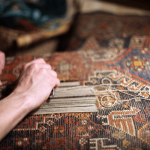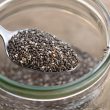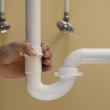Table of Contents
Introduction
Molds are a part of the natural environment. It is common news that the fungi group is bred in and around damp grounds to help biodegradation of natural elements. Although, their presence in (or near) houses is hazardous. Molds are known to trigger allergies and for causing respiratory problems, and it has been proven that some species produce toxins that harm humans.
This is why testing your surroundings should be your top priority if you suspect that mold spores have polluted your home. Mold testing is essential to make your space mold-free. It is done to find hidden mold, inspect the air quality of your house, and identify what kind of mold species (if any) inhabit your place. This article will focus on mold testing, its procedure, and its importance.
What is Mold Testing?
Mold testing is the process of identifying and collecting samples from suspected areas to test for the presence of mold spores. These samples are then sent to a recognized laboratory for careful inspection and analysis.
The aim is to measure the amount of mold present and the species of mold inhabiting the area. The solutions are mapped out based on the results from the lab.It is recommended to contact a qualified mold inspection specialist with connections to an accredited lab for the procedure to get the most accurate reports.
Signs of the presence of mold
Mold contamination is suspected in homes showing the following signs-
- Musty/Moldy Odor
- Signs of or past Water Problems
- Condensation
- Illnesses (breathing issues, itchy skin, headaches, etc.)
- Drywall
- Darkened Grout
Types of Mold Testing
Molds are usually found in musty and humid environments. Hiring a professional is highly recommended if you have a problem. Here are four types of mold testing done by specialists-
Air Testing
Air testing is collecting air samples to find the concentration of mold spores in your home. This is usually done when there has not been noticeable mold growth or hidden molds.
Surface Testing
In surface testing, samples are collected from surfaces of buildings and households to examine the number of mold spores present. This is mainly done through swabbing or tape lifting, and the results may vary since the growth of spores is different on different surfaces.
Bulk Testing
Bulk testing is conducted after the mold has developed significant growth. Pieces of varied materials in your home are collected and sent to a lab for further inspection. The process is to identify your mold problem and the degree of the issue.
Culture Testing
In culture testing, pieces of materials with mold are sent to a laboratory to be grown into larger colonies. This procedure is conducted to find out the species of mold in the house.
How to test for mold at home? Step-by-Step Procedure
Although anyone can be a victim of mold problems, only some homeowners can access specialists. Instead, one can get an easily available mold testing kit from the nearest store. Read on to find out how you can test for mold at home-
Step-1: Prepare the room
It is important to prepare the concerned room properly before a mold test. Hence, remember to close all doors, windows, and vents connected to the room at least 24 hours before the testing.
Step-2: Get the testing supplies kit ready
Open and analyze the mold testing kit. Carefully read the instructions and keep all the materials accessible when needed. Typically, a treated petri dish is provided.
Step-3: Begin with the testing
After 24 hours, your room is ready for the mold test. The petri dish provided to you has been treated with “microbial culture,” a substance allowing old mold spores to grow. Leave that petri dish in the room for a couple of days. Make sure the windows and doors are still closed, and no one enters the place when the test is in progress.
Step-4: Prepare Samples
Seal the petri dish completely with no air allowed in. Store it in a dark place like a closet or a drawer.
Step-5: Get the Results
Check the petri dish after a couple of days.
- If there are no signs of mold, keep it and check for five days. If there is no mold growth in a week, you are safe from contamination.
- If there are signs of mold – you can proceed to send the dish to a lab to determine the species and take action accordingly.
Why testing for mold is important?
There is a high rate of mold sensitivity among individuals. Mold exposure is more likely to affect people with weakened immune systems or take any medication that suppresses the immune system.Mold is sometimes called the silent killer because it can cause breathing problems such as bleeding lungs and asthma.
In addition to allergic reactions, health issues can also occur when you are exposed to mold, and these symptoms are more severe in people with asthma, who are sensitive to mold, and allergic to mold. Allergies can include stuffy noses, wheezing, itchy eyes, itchy skin, or red, itchy eyes.Professional mold testing is necessary to determine the cause of mold problems, as lawsuits related to mold problems are not new.
Conclusion
Mold contamination is not only more common but also more dangerous than one assumes.
Mold can cause many health problems, so quickly detecting mold in your home and removing it promptly is imperative. Frequent professional mold testing is, therefore, vital for one’s safety.

















